Pamukkale is a natural wonder in Turkey, known for its white travertine terraces and thermal waters. Located in Denizli Province, it attracts visitors for its mineral-rich pools and historical sites. The region is home to the ancient city of Hierapolis, a UNESCO World Heritage Site. The warm, calcium-laden waters have flowed here for centuries, forming unique terraces. The area also has archaeological remains that highlight its historical significance. It remains a popular destination due to its natural formations and cultural heritage.
Location

Photo: Antoine Taveneaux / Wikimedia Commons
Pamukkale is in western Turkey, in the Denizli Province. It lies about 19 kilometres from Denizli city centre. The region is famous for its thermal waters, which have shaped the unique white travertine terraces over thousands of years. The site also includes ancient ruins, making it a combination of natural beauty and historical significance. It is part of the UNESCO World Heritage Site, drawing thousands of visitors annually. The location provides an insight into both geological formations and the ancient civilisations that once thrived in the area.
How To Reach

Photo: Leinad / Wikimedia Commons
There are several ways to travel to Turkey, and here’s how you can plan your journey:
By Road: Buses run from major cities such as Istanbul and Ankara to Denizli. From Denizli Bus Terminal, minibuses provide transport to the main destination. Taxis operate from Denizli city centre and the airport. Private taxi services provide direct transfers.
By Rail: The railway network connects Denizli to other cities. The train route from Izmir includes a scenic journey. You can reach the destination in Turkey by taking a local minibus from Denizli station.
By Air: Denizli Cardak Airport is the nearest airport, located about 65 km from Pamukkale. Domestic flights connect to major Turkish cities, and airport shuttles run to this city.
Things To Do
Discover the best things to do in Pamukkale, rendering the best experiences during your trip:
1. Soak In The Thermal Pools
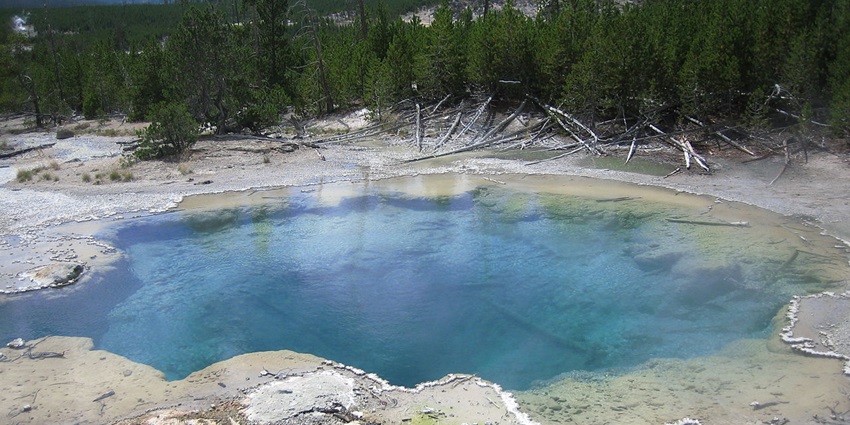
Photo: Billy Hathorn / Wikimedia Commons / Image For Representation Only
Mineral-rich waters flowing down the slopes naturally formed travertine terraces. People have used these pools for centuries because of their warm temperatures and high mineral content. Many believe the waters offer therapeutic benefits for the skin and joints. Visitors can walk barefoot across the terraces, feeling the smooth deposits underfoot while enjoying the cascading pools. The white formations contrast with the blue water, creating a striking visual effect.
2. Paraglide Over The Beautiful Landscapes

Photo: CC0 Public Domain / PxHere / Image For Representation Only
Paragliding offers an aerial perspective of Pamukkale’s famous terraces and the surrounding region. Gliding above the white limestone formations provides a new way to appreciate their size and structure. The experience includes tandem flights with certified pilots, ensuring a controlled and enjoyable descent. The takeoff point offers expansive views before lifting into the sky, allowing passengers to witness the contrast between the white pools and the green valley. This activity is ideal for those seeking adventure while also capturing stunning aerial photographs of the area.
3. Explore Hierapolis Ancient City

Photo: Gargarapalvin / Wikimedia Commons
Near the thermal springs, Hierapolis, an ancient Greco-Roman city, arose and grew into a significant cultural and religious centre. The ruins include a grand theatre with impressive stone seating, an extensive necropolis with elaborate tombs, and remnants of temples and streets that once flourished. The city thrived under Roman rule and attracted visitors seeking the healing properties of its thermal waters. Walking through its preserved structures offers a glimpse into daily life centuries ago, making it an essential visit for history enthusiasts and archaeology lovers.
Places To Visit In Pamukkale
While exploring this destination, consider visiting these attractions to have the best during your amazing vacation:
1. Laodicea Ancient City
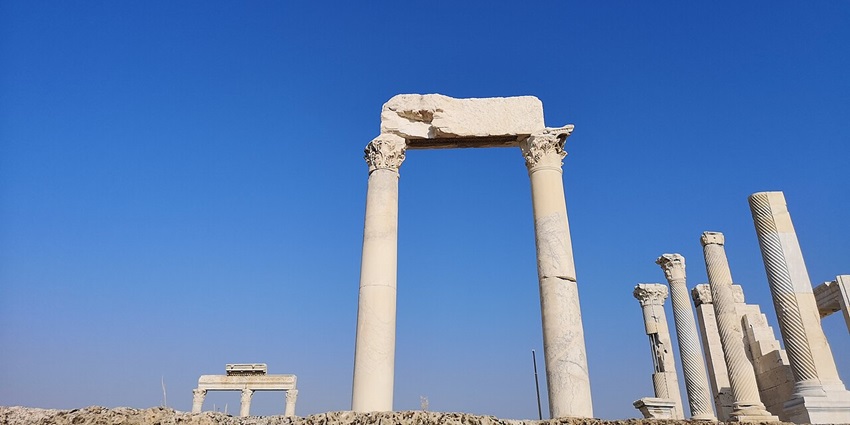
Photo: Gargarapalvin / Wikimedia Commons
Laodicea was an important commercial and cultural hub in antiquity, known for its wealth and strategic location. The site contains remnants of grand temples, an ancient stadium, and well-preserved theatres. Visitors can walk through its colonnaded streets, observe intricate mosaics, and see the remains of a sophisticated water distribution system. The city played a crucial role in Roman and Byzantine history, with influences reflected in its architecture. Its archaeological significance provides valuable insights into urban planning and daily life during those periods.
Major Attractions: Temples, theatres
Timings: 8 AM – 7 PM
2. Kaklik Cave
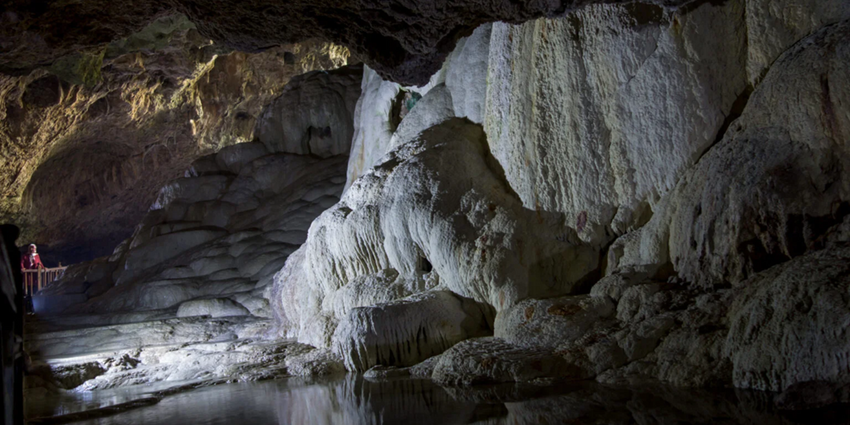
Photo: Mabama08 / Wikimedia Commons
Kaklik Cave is a geological wonder featuring cascading mineral formations and clear thermal pools. Natural light filtering through openings illuminates the underground chamber, creating a striking contrast between shadows and limestone structures. The cave’s mineral-rich waters are believed to have therapeutic properties, attracting visitors seeking relaxation. Walking through the cave reveals layers of calcium deposits shaped over centuries. The humidity and warmth inside make it a unique experience, distinct from traditional open-air thermal sites.
Major Attractions: Underground pools, rock formations
Timings: 9 AM – 6 PM
3. Aphrodisias
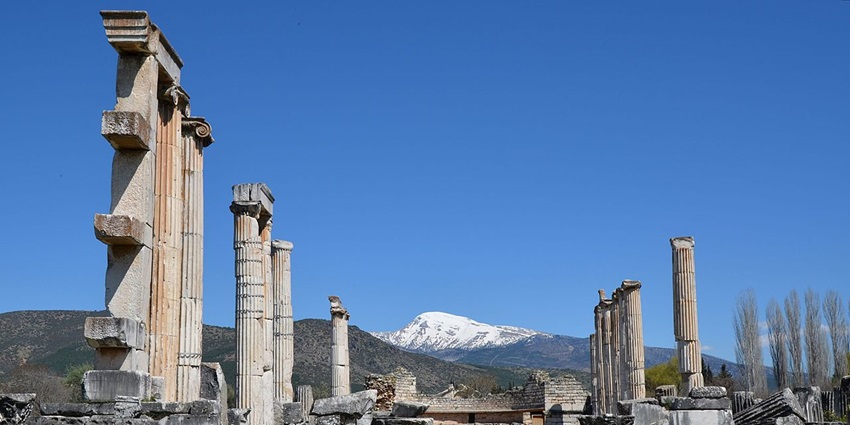
Photo: Carole Raddato / Wikimedia Commons
Aphrodisias was an artistic and religious centre dedicated to Aphrodite, attracting sculptors and scholars from across the region. The city’s grand stadium, one of the best preserved from antiquity, once hosted athletic competitions and public gatherings. The Aphrodite Temple stands as a testament to the city’s devotion to the goddess, with intricate carvings and columns reflecting the artistic excellence of the era. The site also houses an impressive theatre and an ancient agora, offering glimpses into the civic and social life of the period.
Major Attractions: Aphrodite temple, stadium
Timings: 8 AM – 6 PM
4. Pamukkale Museum

Photo: Carole Raddato / Wikimedia Commons / Image For Representation Only
Pamukkale Museum houses an extensive collection of artifacts unearthed from Hierapolis and its surroundings. The displays include intricately carved sarcophagi, well-preserved statues, and detailed inscriptions that narrate the history of the region. Visitors can explore relics from different periods, including Roman and Byzantine influences. The museum also showcases ancient coins, pottery, and jewellery, providing a comprehensive view of the artistic and cultural achievements of the time. The small but informative collection offers an enriching experience for history enthusiasts.
Major Attractions: Archaeological exhibits
Timings: 9 AM – 5 PM
Where To Stay

Photo: Max Vakhtbovycn / Pexels / Image For Representation Only
Pamukkale offers a range of accommodations, from affordable guesthouses to premium resorts. Many hotels include thermal pools, allowing guests to experience the region’s mineral waters in a private setting. Boutique stays provide a personalised atmosphere with traditional architecture and warm hospitality, ideal for those seeking a more immersive visit. Larger hotels offer modern comforts such as spas and fine dining. Some visitors prefer staying in Denizli, where accommodations are more diverse, with convenient access to transport options for exploring this destination.
Where To Eat

Photo: Francesc Fort / Wikimedia Commons / Image For Representation Only
Pamukkale’s restaurants serve a variety of Turkish dishes, from grilled meats to vegetarian specialties. Many establishments use locally sourced produce, ensuring freshness in every meal. Traditional bakeries offer fresh bread and pastries, while family-run eateries specialise in slow-cooked stews and kebabs. Cafés near the travertines serve light snacks, making them convenient for visitors. Some restaurants focus on regional recipes, presenting an opportunity to try lesser-known delicacies. Whether dining at an upscale venue or a simple roadside café, visitors can enjoy authentic local flavours.
Best Time To Visit
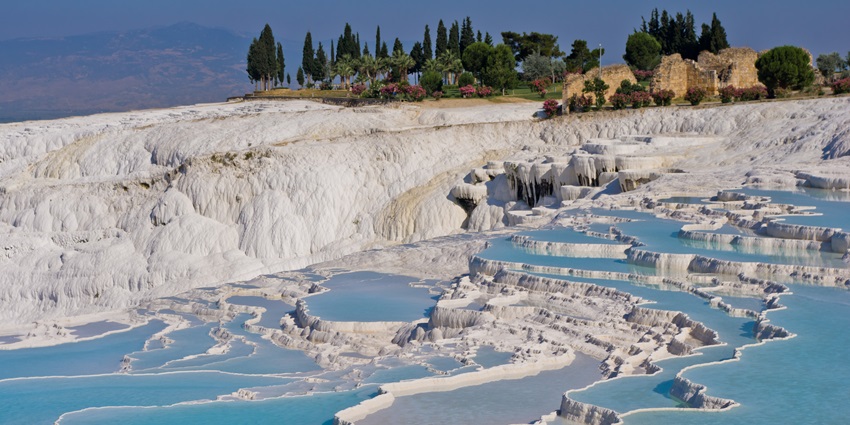
Photo: Antoine Taveneaux / Wikimedia Commons
The most suitable time to visit this city is during spring and autumn, when the climate remains mild. From April to June and September to November, visitors can explore comfortably without extreme heat or cold. Summer months bring high temperatures, making early morning or late evening visits preferable. Winter offers a different charm, with fewer tourists and a peaceful atmosphere. Travellers visiting during colder months may also appreciate the warm thermal pools, which provide a contrast to the cool surroundings..
Tips For Travellers

Photo: CC0 Public Domain / PxHere / Image For Representation Only
- Wear comfortable shoes for walking on travertine.
- Carry sunscreen and water, as the site is mostly exposed.
- Check local regulations before visiting historical sites.
Pamukkale combines natural formations and historical landmarks, making it an interesting place for travellers. The thermal pools, formed by calcium deposits, create a distinctive setting, while ancient ruins such as Hierapolis provide insight into the past. Visitors can explore preserved structures, including an amphitheatre and necropolis, offering a glimpse into early civilisations. Whether relaxing in mineral-rich waters or walking through archaeological sites, it provides a memorable experience. Plan your visit with TripXL for a well-organised itinerary covering key attractions and local insights.
Cover Photo: A.Savin / Wikimedia Commons


 WhatsApp
WhatsApp
 Twitter
Twitter









